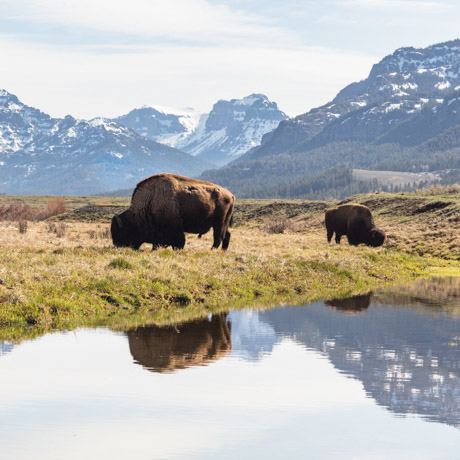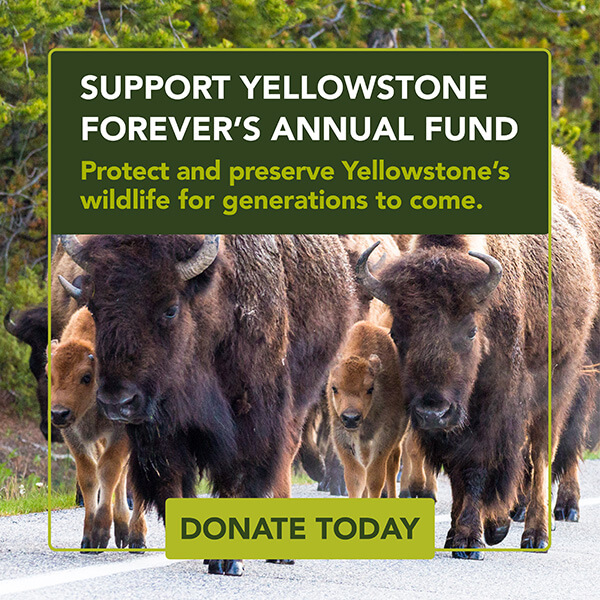Yellowstone’s Prequel: Wildlife & Humans in the Evolutionary Past and Now
June 9 - 12
Lamar Buffalo Ranch
No
Jeff Reed, Ph.D., Joanna Lambert, Ph.D.
18+
Field Seminars
Sold out: Please sign up for the waitlist.
Yellowstone National Park is known around the world for its wildlife and for having among the most intact carnivore assemblages in the United States, but it pales in comparison to its faunal diversity in the evolutionary past. Join us in this 5-day seminar that will trace the evolutionary, archaeological, and cultural history of the Greater Yellowstone Ecosystem over the past 2 million years, but with a special emphasis on the last ~20,000. Through lecture, film, and -- most importantly -- time in the field, you will learn about the magnificent wildlife of Yellowstone in the Pleistocene epoch when humans were newcomers to North America and mighty glaciers shaped every aspect of life. Topics to be discussed will include the diversity and adaptations of wildlife in the Pleistocene compared to today, how ancient humans lived and interacted with wildlife, the shared evolutionary history of humans with animals, the special relationship between humans and their dogs, how humans made a living both during and after the retreat of ice sheets, and how you too can “listen for the language of wildlife” like those who came before you.
You will spend as much time as possible outdoors—weather and conditions permitting, this will include at least 6 hours+ looking for and observing animals and considering landscapes in which both humans and wildlife coexisted. These field forays will be expedition-like in nature, meaning that you will aim to be as spontaneous and exploratory as circumstances allow and as opportunities arise. In addition to wildlife observation, you will also encourage you to be as attuned to your surroundings as possible, listening, watching, and even smelling every cue that the land is revealing about its wildlife, both then and now. Discussion will be on-going throughout the class – not just in lecture but in the field and vehicle as you make your way through the Park, especially the northern range (though you will likely travel further afield as well – e.g., Hayden Valley, etc). However, you will also encourage contemplation in silence. Each day you will have guided natural history hikes and a lecture; your evenings will be spent in either lecture, watching film, or in facilitated group discussion.
About the instructors
Joanna Lambert, Ph.D. is a scientist and tenured professor of animal evolutionary ecology and conservation biology at the University of Colorado – Boulder. She has a deep passion for the natural world resulting in a career spent publishing and teaching about the ecology, evolution, and conservation biology of wild mammals. Her wildlife research has taken her to every continent on the planet though she has spent most time working in equatorial Africa (>30 years) and more recently in Yellowstone National Park where she studies canid biology. One of her proudest recent conservation-related contributions has been in the effort to restore gray wolves to her home state of Colorado, an initiative founded on the science of reintroduction and recovery of wolves to Yellowstone National Park.
Jeff Reed, Ph.D. was born and raised in the Greater Yellowstone Ecosystem in southwest Montana and owns Reedfly Farm, practicing regenerative agriculture and conservation. With a PhD in linguistics and history, he has published on the history of language and humans. He spent 30 years in the technology industry, working on linguistics and artificial intelligence, and now builds solutions that are used by wildlife researchers. He focuses much of his free time interacting with wildlife, practicing paleo-living, researching animal communication via computational linguistics, and living as part of nature. He is an executive committee member of the Upper Yellowstone Watershed Group, promoting the co-existence of people and wildlife…though he considers people wildlife too!
Testimonial
"This was absolutely incredible. Both instructors were so knowledgeable and organised the class well. Volunteers were also friendly and helpful. I already want to come back!" - Katie, CO
Download Program Information:
Yellowstone's Prequel: Wildlife & Humans In The Evolutionary Past And Now Course Letter






